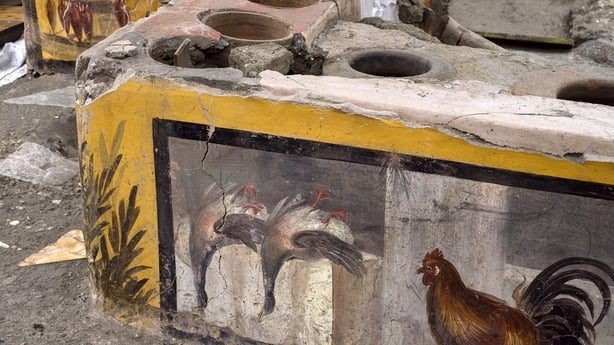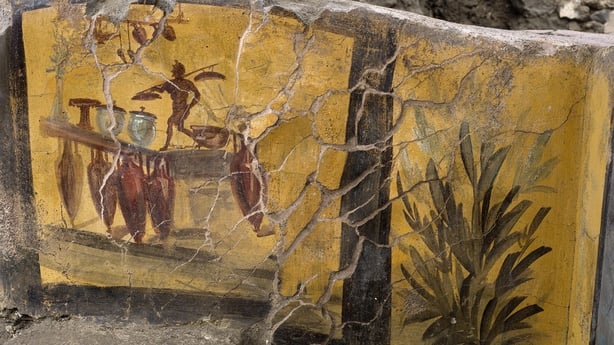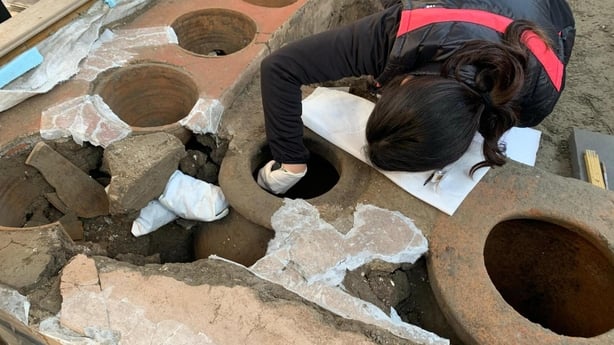Archaeologists in Pompeii, the city buried in a volcanic eruption in 79 AD, have made the extraordinary find of a hot food and drinks shop that served up the ancient equivalent of street food to people.
Known as a thermopolium, Latin for hot drinks counter, the shop was discovered in the archaeological park's Regio V site, which is not yet open the public.
Traces of nearly 2,000-year-old food were found in some of the deep terracotta jars containing hot food, which the shopkeeper lowered into a counter with circular holes.
The front of the counter was decorated with brightly coloured frescoes, some depicting animals that were part of the ingredients in the food sold, such as a chicken and two ducks hanging upside down.

"This is an extraordinary find. It's the first time we are excavating an entire thermopolium," said Massimo Ossana, director of the Pompeii archaeological park.
Archaeologists also found a decorated bronze drinking bowl known as a patera, ceramic jars used for cooking stews and soups, wine flasks and amphora.
Pompeii, 23km southeast of Naples, was home to about 13,000 people when it was buried under ash, pumice pebbles and dust as it endured the force of an eruption equivalent to many atomic bombs.
"Our preliminary analyses shows that the figures drawn on the front of the counter, represent, at least in part, the food and drink that were sold there," said Valeria Amoretti, a site anthropologist.

She said traces of pork, fish, snails and beef had been found in the containers, a discovery she called a "testimony to the great variety of animal products used to prepare dishes".

About two-thirds of the 66-hectare ancient town has been uncovered. The ruins were not discovered until the 16th century and organised excavations began about 1750.
A rare documentation of Greco-Roman life, Pompeii is one of Italy's most popular attractions and a UNESCO World Heritage Site.
We need your consent to load this rte-player contentWe use rte-player to manage extra content that can set cookies on your device and collect data about your activity. Please review their details and accept them to load the content.Manage Preferences

